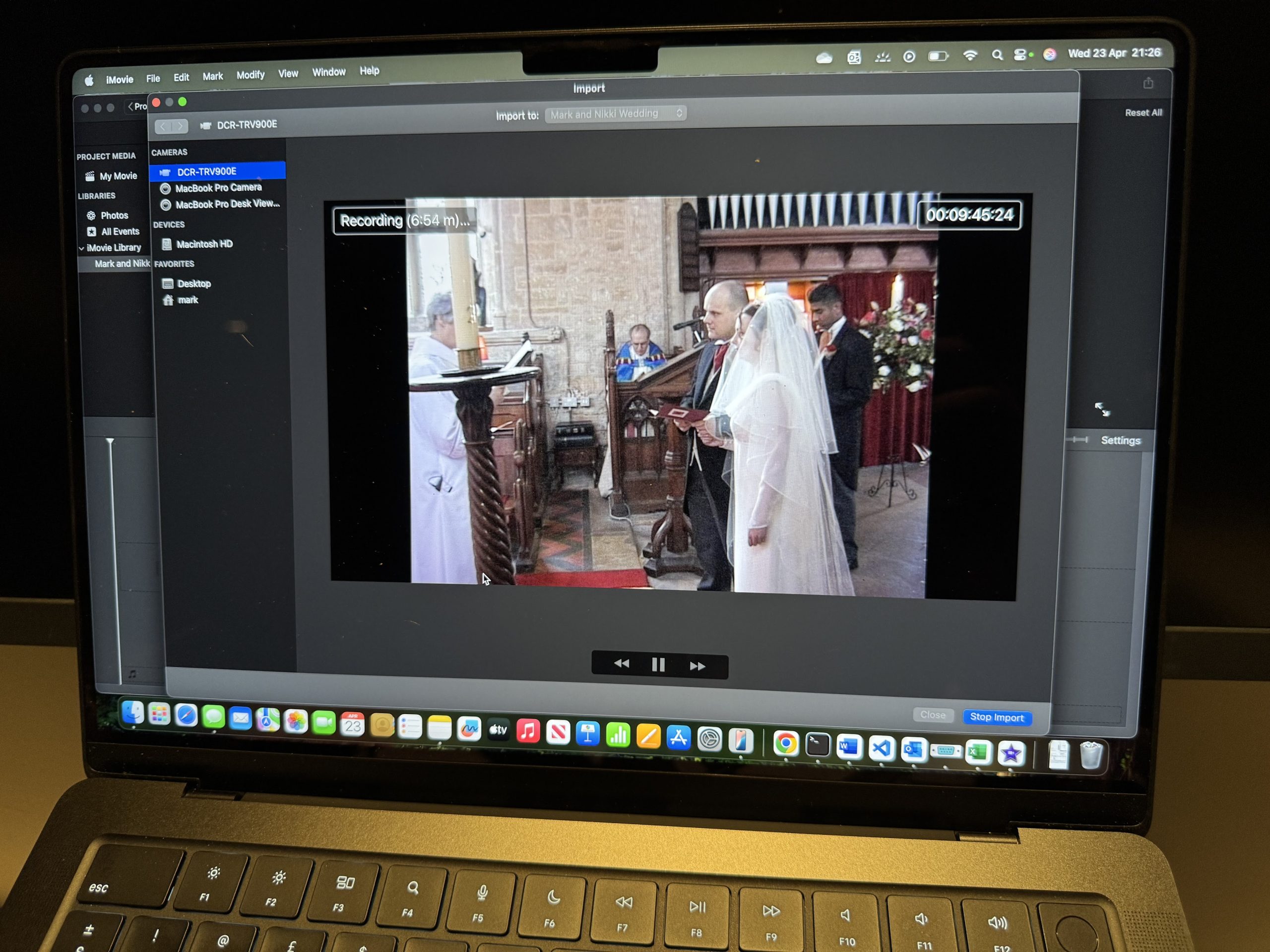It’s a common problem: aging media on legacy technology; valuable content that needs to be preserved. For me, that content is my travels to Australia and South Africa when I was in my 20s; getting married; and early days with our children (who are now adults). And whilst losing some of those videos (never watched or edited) would simply be annoying, the footage of the-tiny-people-who-grew-into-men would be devastating to lose.
So I have a project, to import as much of the content as I can to a modern computing system. I even used it as a justification to buy myself a new MacBook Pro (it’s “man maths” – don’t ask*).
What’s the problem?
- My digital video camera is a Sony DCR-TRV900E from circa 1998. The media are MiniDV cassettes (digital, but read serially). The interface is Firewire 400.
- My Mac has Thunderbolt 3 ports, using the USB-C form factor.
I needed to connect these two things.
And the hardware solution?
The Internet is full of videos about this – and it’s a cable and adapter setup that is so Heath Robinson-esque it shouldn’t work. But it seems to. For now. My task is to import the content before it stops working!
- First up, the Firewire 400 cable from the camcorder. Firewire 400 is also known as IEEE1394 or Sony i.LINK. I already had a suitable cable, possibly supplied with the camera.
- Then, a Firewire 400 to 800 adapter. I used this one from Amazon. That’s the inexpensive part.
- Next, Firewire 800 to Thunderbolt 2. Apple no longer sells this adapter so it’s expensive if you can find one. There are some very-similar looking ones on AliExpress, but they were only a little less expensive than the genuine Apple one that I found here: Apple Thunderbolt to FireWire 800 Adapter Dongle A1463. I paid £85 (ouch).
- Finally, Thunderbolt 2 to Thunderbolt 3. These are still available from Apple (Thunderbolt 3 (USB-C) to Thunderbolt 2 Adapter), but are another £49 so I saved a few quid by buying one second-hand.
The whole setup looks like this (£150 of electronics… but priceless memories, remember…):

How to import the footage
- Connect the Camcorder to the Mac, using the various cables and adapters.
- Put the Camcorder into Video Tape Recorder (VTR) mode and insert a tape. Rewind it to the start.
- Fire up iMovie on the Mac and create/open a library.
- Click Import Media (from the File menu). Select the camera (e.g. DCR-TRV900E) and you should see the first frame.
- Click Import.
Then, sit back and wait as the contents of the video are read, serially, and imported to iMovie. Other video editing packages may also work, but I used what I already had installed with macOS. Just remember that the transfer happens in real-time – but it’s also an opportunity to get nostalgic about times past. You’ll also need to stop the import when you get to the end of the footage.
Now, does anyone have an Advanced Photo System (APS) film attachment for a Sony Coolscan IV ED film scanner?
*I do have functioning Mac Minis from 2006 and 2012 with Firewire connections, but the 2006 Mini is long-unsupported and the versions of MacOS and iMovie it has are alarmingly dated. The 2012 one is better, but I found I was getting application crashes on import. That drove me to invest in a solution that would work with my M4 MacBook Pro…
Featured image: author’s own.






